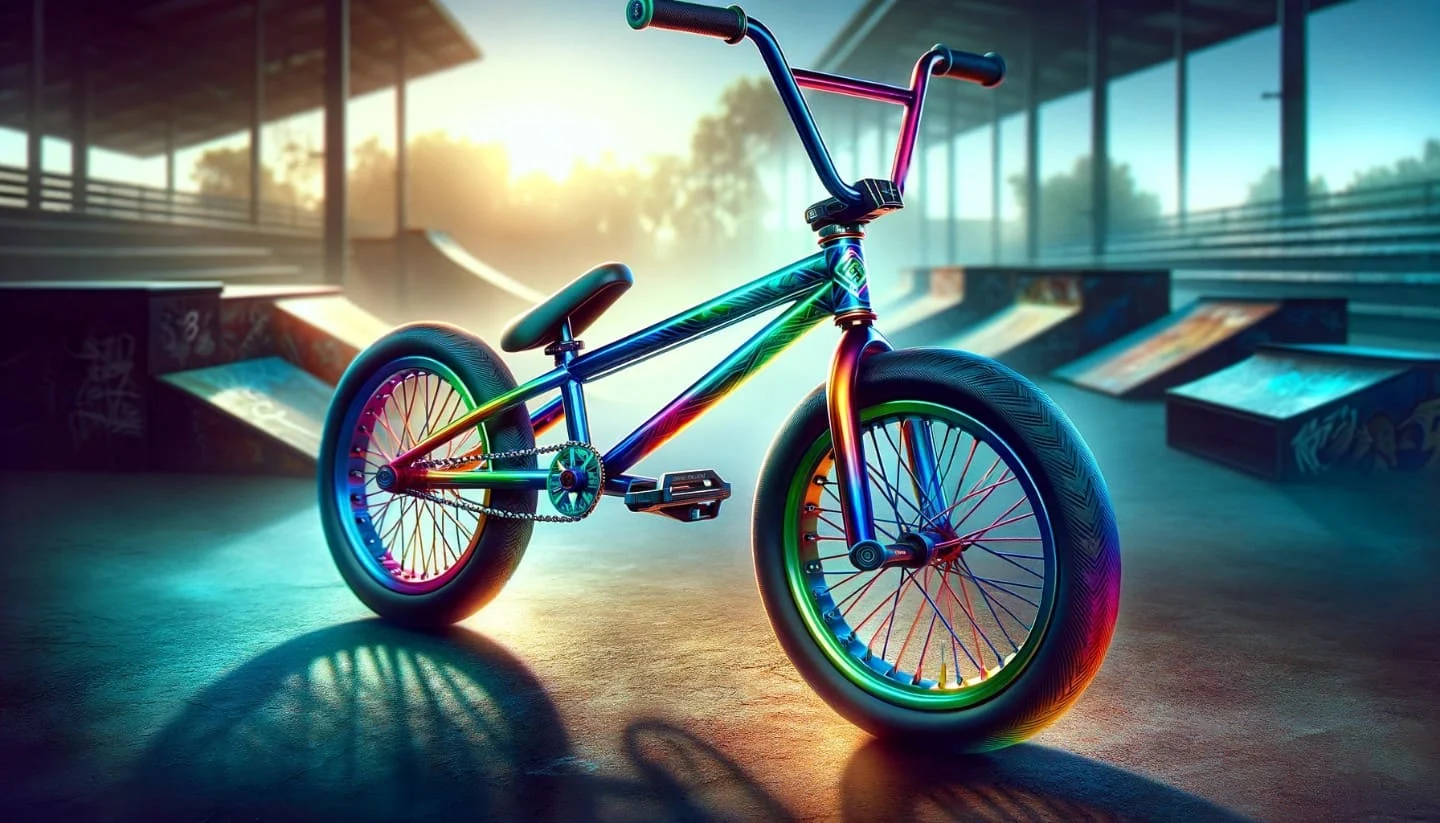In the dynamic world of BMX biking, the 18-inch freestyle BMX bike has emerged as a cornerstone for riders who crave agility, style, and the thrill of performing breathtaking stunts. This article delves into the evolution, features, and unique appeal of these bikes, offering insights into why they are more than just a sports equipment but a symbol of a vibrant, ever-evolving culture.
Historical Context
BMX (Bicycle Motocross) biking took root in the late 1960s and early 1970s, originating from the desire of young cyclists to emulate motocross riders. The sport has since burgeoned, splitting into various styles, with freestyle BMX gaining substantial momentum. It is within this freestyle category that 18-inch BMX bikes have carved their niche.
Design and Specifications
Unlike their 20-inch counterparts, 18-inch BMX bikes are specifically designed to cater to younger riders or those of a smaller stature, offering a more comfortable and controllable ride. These bikes typically feature a compact, lightweight frame, often made from high-tensile steel or aluminum, to withstand the rigors of freestyle riding.
The wheels are constructed to endure the impact of jumps and stunts, with double-wall rims and high-pressure tires. Additionally, these bikes boast a responsive brake system, pivotal for executing precise maneuvers. The aesthetic aspect isn't ignored either; these bikes often come in vibrant colors and graphics, reflecting the lively spirit of BMX culture.
Riding Dynamics
The 18-inch freestyle BMX bike excels in offering a balanced blend of stability and agility. Its smaller frame and wheel size make it easier for riders to perform tricks, such as tailwhips and spins, allowing for a more controlled and fluid riding experience. This control is crucial in freestyle BMX, where precision and technique are as important as the stunts themselves.
Cultural Impact
Beyond the technicalities, 18-inch BMX bikes represent a youthful, rebellious spirit inherent in BMX culture. They're not just sports equipment; they're a medium for self-expression. Riders customize their bikes, not just for performance but to reflect their personal style, making each bike a unique testament to its rider's identity.
The Future of 18-Inch BMX Bikes
The future of 18-inch freestyle BMX bikes looks promising, with continuous advancements in design and technology. Manufacturers are constantly innovating to create bikes that are lighter, stronger, and more agile, responding to the evolving needs of riders. The community around these bikes is also growing, with more young riders entering the sport, inspired by professional BMX athletes and the inclusivity of the BMX community.
Conclusion
The 18-inch freestyle BMX bike is more than a downsized version of its 20-inch counterpart. It's a distinct category that has adapted to the needs of a specific group of riders, offering them the perfect tool to express themselves and push the boundaries of what is possible on two wheels. In the world of BMX, where creativity and individuality reign supreme, these bikes hold their ground, not just in size but in the significant impact they have on the sport and its culture.
FAQ: 18-Inch Freestyle BMX Bikes
1. What is an 18-inch freestyle BMX bike?
An 18-inch freestyle BMX bike is a bicycle specifically designed for BMX freestyle riding, which includes performing tricks, stunts, and aerial maneuvers. These bikes have a frame and wheel size of 18 inches, making them smaller than standard BMX bikes.
2. Who should use an 18-inch BMX bike?
These bikes are ideal for younger riders, typically aged 7 to 13, or for riders of a smaller stature who find a more compact bike easier to control and maneuver.
3. Can adults ride 18-inch BMX bikes?
While they are primarily designed for younger or shorter riders, adults of a smaller build can also comfortably ride 18-inch BMX bikes, especially for freestyle riding where bike control is crucial.
4. What are the key features of an 18-inch freestyle BMX bike?
Key features include a compact and sturdy frame, often made of high-tensile steel or aluminum, smaller 18-inch wheels with thick tires, a responsive brake system, and a design optimized for agility and trick performance.
5. Are 18-inch BMX bikes suitable for racing?
While they can be used for casual racing, 18-inch BMX bikes are primarily designed for freestyle riding. For competitive BMX racing, larger bikes are typically more suitable due to their stability and speed.
6. How do I choose the right 18-inch BMX bike?
Consider the rider's age, height, and skill level. Look for a durable frame, quality brakes, and comfortable handlebars. It's also important to choose a bike that fits the rider's style and the type of riding they'll be doing.
7. How much does an 18-inch BMX bike typically cost?
Prices can vary widely based on brand, materials, and features, ranging from a few hundred dollars to over a thousand for high-end models.
8. Can I customize an 18-inch BMX bike?
Absolutely! Customization is a big part of BMX culture. You can change components like handlebars, seats, pedals, and tires to suit your style and improve performance.
9. What safety gear should be used with an 18-inch BMX bike?
Always wear a helmet. Additional safety gear includes knee and elbow pads, wrist guards, and BMX gloves to protect against falls and injuries while riding.
10. Where can I learn BMX freestyle tricks on an 18-inch bike?
BMX parks and skate parks are great places to learn and practice. There are also online tutorials, BMX workshops, and local clubs where experienced riders can teach beginners.


